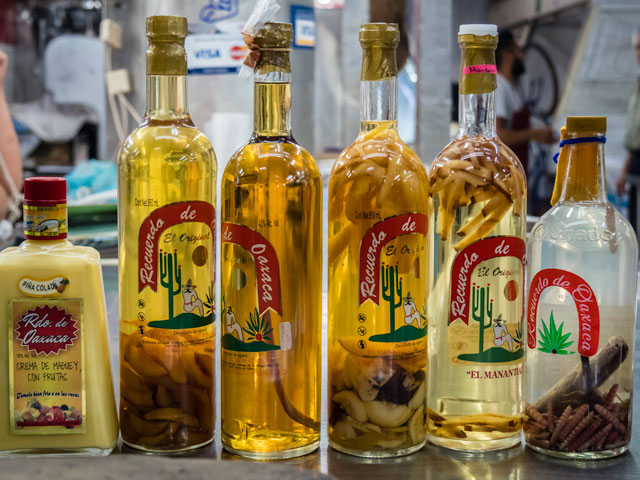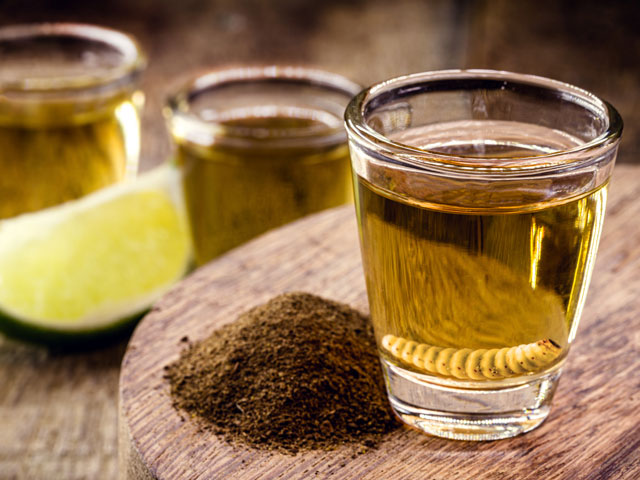The Truth About the Tequila Worm
You may have heard the rumors of worms packaged into tequila bottles. Perhaps, you have even seen one yourself or dared to chase one down with a shot. But what are the worms doing there? Where do they come from? And is it really okay to eat them?
Written by CraftJack | Updated | 4 min read
Interesting Tools
- Beer BrüMate Hopsulator
- Brewing Northern Brewer Beer Making Kit
- Spirit Crystal Whiskey Glasses
- Wine Wine Decanter/Aerator

Tequila worms are a subject of debate in bars worldwide. Many wonder whether they make drinks taste better or worse, add to one’s drunkenness, or even cause hallucinations. Some say they taste like chicken; others say eating them will make you drunk. Keep reading to discover the truth about tequila worms and where the tradition of adding them to the bottom of the bottles began.
The Tequila Worm
Despite popular belief, there are no brands of tequila that have a worm in them. Instead, you can only find worms in bottles of Mezcal. Tequila and Mezcal are very similar; they are both made in Mexico, have a similar ABV, and contain agave. But, there are a few bigger differences.
Tequila is, in fact, a type of Mezcal, not the other way around. Mezcal tends to be slightly stronger than tequila and with a smokier flavor. You may find one of the notorious “tequila” worms in bottles of this drink. It’s also not uncommon to buy a bottle of Mezcal and find a worm inside, a separate container with extra worms to add to individual drinks, or even a packet of worm salt.
What is Mezcal?
Mezcal, as noted above, is its own drink, separate from tequila and well-worth trying. The distillation from agave, a succulent widespread in Mexico (also where the drink originated). The name itself comes from the word “Mexicali,” meaning “oven-cooked agave,” and is of Nahuatl or Aztec origin. During the mid-1900s, the popularity of Mezcal spread outside Mexico into the United States, Japan, and other countries around the world.
Mezcal itself comes from any of 30 different types of the same plant. Most tequila originates from Michoacán, Jalisco, Guanajuato, Tamaulipas, and Nayarit. In contrast, most Mezcal comes from Durango, Guanajuato, Guerrero, San Luis Potosi, Zacatecas, Tamaulipas, Michoacán, and Puebla.
Today, Mezcal is quite popular, bringing in over $800 million in sales a year and only growing as more and more people try it for the first time and drink it as a substitute or in addition to tequila. But, it still pales compared to tequila’s $5.2 billion in sales a year.
What is the Tequila Worm?
Don't worry; the little worm you may find inside your bottle of tequila is not alive. In fact, it's not a worm at all. It's the larvae of a moth. It’s called a gusano de maguey, named for the maguey plant it feeds off of and which tequila and Mezcal are both made from. And in fact, the Mexican government prohibits the placement of insects and larvae of any kind into tequila.
Today, you can also find these unique maguey worms in tacos, lollipops, and fried as snacks.
You might find a worm in your bottle for a few different reasons. The most common is a marketing ploy that began in the mid-1900s to encourage more people to try the drink. One story cites Jacobo Lozano Paez, an intrepid entrepreneur with the idea to put these moth larvae into bottles of Mezcal, thinking it would change the drink’s flavor. But, there is no real proof that this story is true.
Others suggest that the added worms were purely a marketing ploy to entertain American drinkers and encourage more people to try the drink so they, too, could see and try the worms. Some have also used the added worms to help Mezcal stand apart from its more popular rival, tequila.
Over time, the idea that Mezcal is a fancier tequila has caught on, particularly Mezcal with a worm. But, today, that doesn’t indicate a higher quality drink. Most people specifically stay away from Mezcal with a worm in it because these bottles tend to be lower quality and are sold today purely for entertainment value.

Can You Eat the Tequila Worm?
You can certainly eat the worm in your tequila if you want to. While these worms are generally viewed as more of a marketing ploy than a delicacy, you are welcome to eat them if you're curious.
Most people who have done so claimed they taste a bit like chicken. Some people eat them by themselves, while others swallow them with a shot of mezcal. We're not sure that that's how we like ripping shots of booze, but to each their own.
The worms are soaked and pickled in the drink itself, which should come, in theory, give it a bit of a mezcal flavor.
Do Tequila Worms Get You Drunk?
If you do try one of these tequila worms, you're more likely to find that the worm does nothing to add to the flavor of your drink. It will also, contrary to common belief, not increase drunkenness or bring on hallucinations. You can eat as many of these forms as you want, and you'll never experience a worm-induced hallucination. Some even believe the worm may bring you magical powers upon consumption.
In Conclusion
To wrap up, you won’t be able to find a worm in your tequila! Instead, you will be able to find a moth larva, specifically the Gusano De Maguey, in bottles of Mezcal. They first appeared in these bottles in the mid-1900s in what most people agree was a marketing strategy to make the drink more interesting and entertaining for American audiences.
The worms are edible (maybe tasting like chicken) but do not add anything to the drink's flavor. Contrary to popular belief, they won't make you drunker or cause hallucinations. In fact, most people avoid bottles of Mezcal with maguey worms because they tend to be of lower quality, depending on the entertainment value to sell the drink rather than the drink’s quality and taste.
In conclusion, if you want to eat one of the so-called tequila worms, go for it! But don’t expect it to make your drink taste any better.
